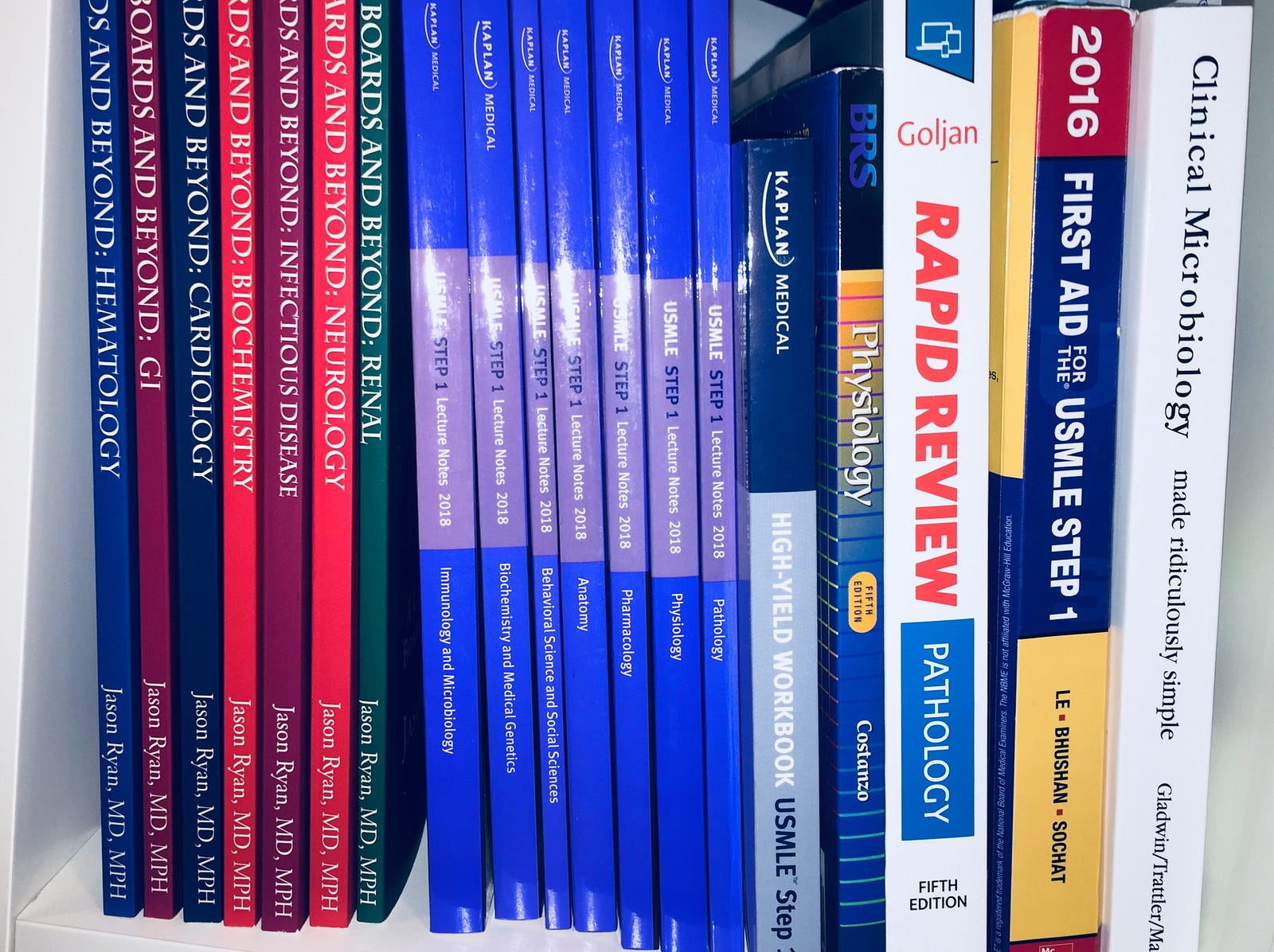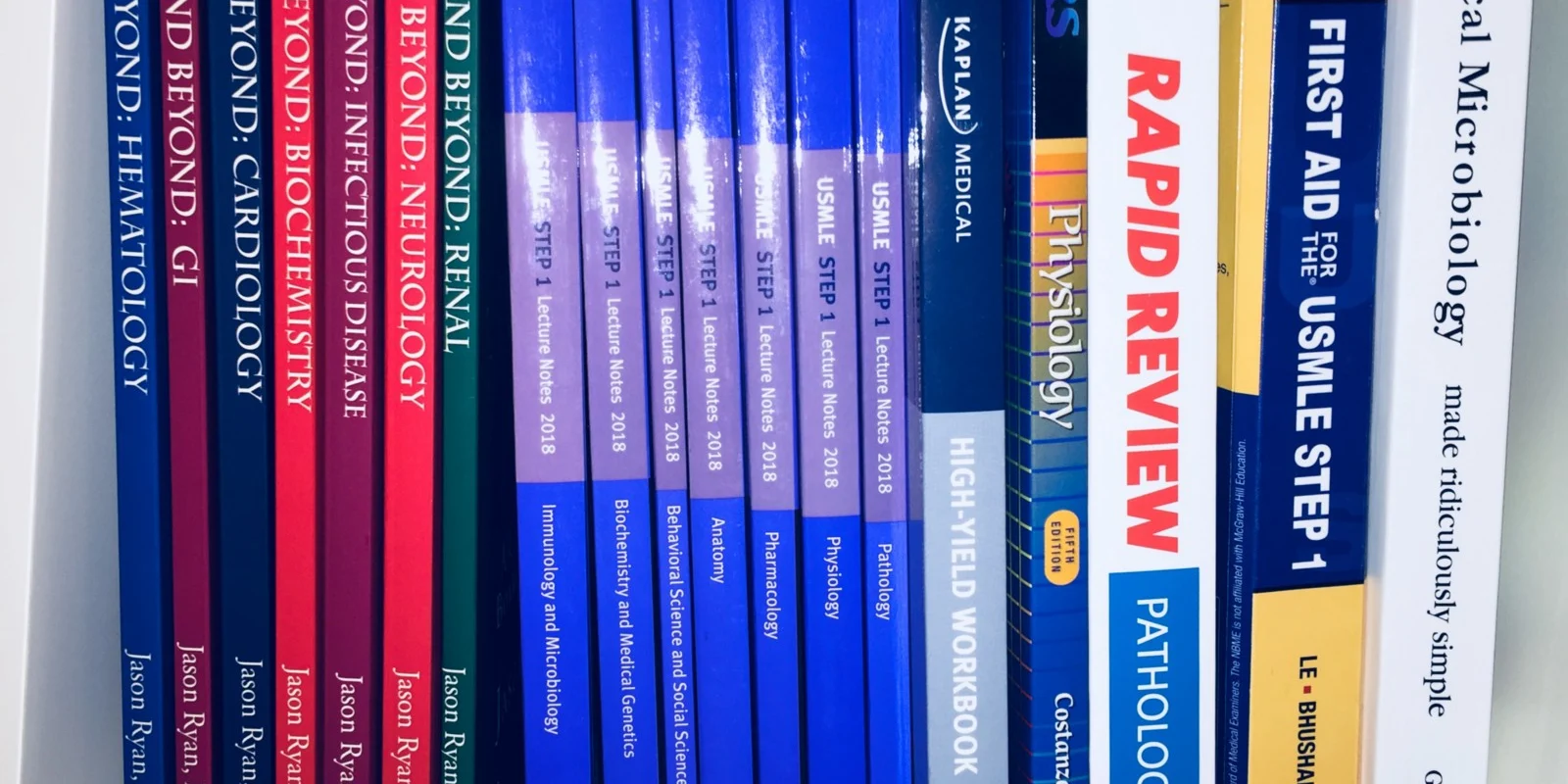
So, it’s almost time for you to take that infamous Step 1 exam, and like every other medical student you’re wondering which resources are truly worth your dedicated preparation time.
But there are plenty of other tools out there. As a medical student who’s been through it, here’s a breakdown of Step 1 resources I used and what I thought of them.
Spaced Repetition Apps
The only way to solidify concepts.
-
Osmosis. Osmosis offers more than 2,000 board-style questions, flashcards, and videos. The app is a relatively quicker way to learn concepts via spaced repetition. The board-style questions come with excellent explanations. It is best used six months out from exam day.
-
Gunner Level: Firecracker has 15,000 flashcards and 1,200 board-style questions, which can take around six months to complete. They recently added a Pathoma and Sketchy companion to be used in conjunction with those resources. In my opinion, if you’re more than a year away from your test day, it’s a necessity; otherwise, skip it.
Note: Gunner-level recommendations are for those who want to score beyond the current national average on for Step 1 (which is currently a 230).
Pathology
The most-heavily tested subject on the exam.
-
Pathoma is the gold standard. Dr. Sattar does an excellent job of providing you with the fundamentals. The videos are short, concise, and high yield.
-
Gunner Level: Rapid Review Pathology. Dr. Goljan is timeless and profound. Every medical student should read Rapid Review Pathology at some point during their education. It is 800 pages of the most high-yield info jam-packed into one book. What role does magnesium play in PTH regulation? Read Dr. Goljan’s book to find out. The new edition released in March of 2018 is perhaps my most exciting purchase of the year.
-
Gunner Level: Kaplan Pathology by Dr. Barone Everything Dr. Barone says is money. No one does pathology better. He makes it possible to read through Rapid Review Pathology and understand the high-yield concepts. Want to know how to diagnose renal cell carcinoma without even looking at the kidneys? Take his class, the most entertaining and educational pathology class you will ever take.
Physiology:
To understand pathology, we must first understand normal processes.
-
Costanzo Physiology (Big Costanzo) or BRS Physiology (Little Constanzo)
-
Gunner Level: Physeo breaks down the most complex physiological concepts and explains them in a way that is memorable, testing you with questions along the way. How does hyponatremia cause increased contractility? Sure we all know about Digoxin and the Na+K+ATPAse pump, but what about that lesser known Na+ Ca+ Antiporter in myocardial cells? In my opinion, Physeo videos are a gunner necessity! Learning from Physeo made reading Costanzo much easier! Of note, the neurophysiology videos are essential to tackle neuroanatomy questions, and they are perhaps the only resource that does a sufficient job with this topic.
Microbiology and Pharmacology
-
Sketchy Medical anyone? The best way to learn bugs and drugs! The sketches stick, and this is the single best way to ace microbiology questions!
- Sketchy Micro can be supplemented with Clinical Microbiology Made Ridiculously Simple.
-
Gunner Level: Conrad Fischer MedQuest Pharmacology These lectures are golden and a great 30-hour review of the mechanism of action, side effects, and clinical uses of the most important drugs for Step 1. Dr. Fischer is as entertaining as ever and shares high yield factoids that are not found elsewhere. Learn about livedo reticularis as a rare side effect for Amantadine and why Beta Blockers are the initial drug of choice for esophageal varices.
Comprehensive Reviews
-
Boards and Beyond. These videos walk you through all of the concepts tested in first aid. The videos cover all sections in first aid but in particular do an excellent job with the basic sciences. In addition to the organ systems, subjects such as biochemistry, genetics, epidemiology & statistics, immunology, and anatomy are all taught with detailed explanations. Dr. Jason Ryan doesn’t just read first aid to you, he thoroughly breaks down every fact and ensures it is understood.
-
Gunner level: Kaplan’s Step 1 Courses. The Kaplan Step 1 course goes through all of anatomy, behavioral sciences, biochemistry, immunology, microbiology, pathology, pharmacology, and physiology. Each subject is covered in detail during an adequate four-month schedule. While professors may vary for each session. Dr. Turco for biochemistry was an exceptional professor. Topics such as genetic imprinting and ADP ribosylation are explained like never before. Dr. Harris does an excellent lecture on pharmacokinetics and pharmacodynamics.
Finally and most important: Questions! Questions! Questions!
So which question bank should you use? More than one! In fact, using 2.5 question banks is now strongly recommended.
-
U World. This is the gold standard, a necessity, and the most important question bank you will use. These questions best resemble the questions you will see on your exam. Read through every explanation to understand concepts, take notes, and make flash cards. This question bank is a great learning tool. Be sure to use the U World assessments, which predict your score to within +/- 10 points.
-
USMLE Rx. While being much less difficult than U World, Rx forces you to learn intricate details in first aid by providing direct pages in the answer explanations. This is an excellent way to become familiar with first aid. It’s best done early on in your prep.
-
Kaplan Qbank. This question bank is more difficult than Rx. The details tested in Kaplan Qbank are unique. The physiology questions are particularly important. The Kaplan stimulated exams are an excellent way to build endurance for the seven-hour exam.
-
Gunner level: Pastest offers a free subscription until August of 2018. The questions are high on the difficulty scale and provide a new perspective to asking questions. Want to learn why imatinib is not always the correct answer for CML, and how tyrosine kinase resistance occurs? Check out PasTest.
How do you know you’re ready?
-
NBMES. All six NBMES are an accurate estimate of your actual score within five points. NBME 15 is often deemed most predictive of your actual score. These should be saved for 4–6 weeks out from exam day.
Good luck slaying the beast!







